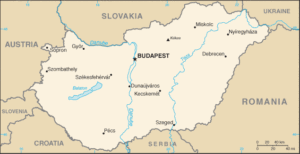 Jewish communities lived in the medieval Kingdom of Hungary and Jewish officials served the king during the early 13th century reign of Andrew II. From the second part of the 13th century, the general religious tolerance decreased and Hungary’s policies became similar to the treatment of the Jewish population in Western Europe. During the time of the Black Death, in 1349, they were expelled from the country. Although the Jews were immediately readmitted, they were again persecuted, and were once again expelled in 1360 by King Louis the Great of Anjou.
Jewish communities lived in the medieval Kingdom of Hungary and Jewish officials served the king during the early 13th century reign of Andrew II. From the second part of the 13th century, the general religious tolerance decreased and Hungary’s policies became similar to the treatment of the Jewish population in Western Europe. During the time of the Black Death, in 1349, they were expelled from the country. Although the Jews were immediately readmitted, they were again persecuted, and were once again expelled in 1360 by King Louis the Great of Anjou.
 The Jews living in the parts of Hungary occupied by the Ottoman Empire were treated far better than those living under the Habsburgs. During the periods of 1546-1590 and 1620–1680, the community of Ofen (Buda) flourished. At the end of the Ottoman era, the approximately one thousand Jews living in Buda worshipped in three synagogues. The imperial troops recaptured Buda on September 2, 1686, most Jewish residents were massacred, some captured and later released for ransom. In the following years the whole of Hungary now came under the rule of the House of Habsburg.
The Jews living in the parts of Hungary occupied by the Ottoman Empire were treated far better than those living under the Habsburgs. During the periods of 1546-1590 and 1620–1680, the community of Ofen (Buda) flourished. At the end of the Ottoman era, the approximately one thousand Jews living in Buda worshipped in three synagogues. The imperial troops recaptured Buda on September 2, 1686, most Jewish residents were massacred, some captured and later released for ransom. In the following years the whole of Hungary now came under the rule of the House of Habsburg.
Joseph II, immediately on his accession alleviated the condition of the Jews, in May 13, 1781. The Hungarian government issued (March 31, 1783) a decree known as the Systematica gentis Judaicae regulatio, which wiped out at one stroke the decrees that had oppressed the Jews for centuries. The royal free towns, except the mining-towns, were opened to the Jews, who were allowed to settle at leisure throughout the country. After the death of Joseph II the royal free cities showed a very hostile attitude toward the Jews. The citizens of Pest petitioned the municipal council that after May 1, 1790, the Jews should no longer be allowed to live in the city. The government interfered; and the Jews were merely forbidden to engage in peddling in the city.
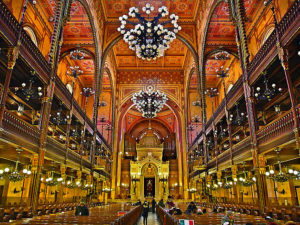 King Leopold II was responsible for the law entitled De Judaeis, which forms the thirty-eighth article of the laws of the Diet of 1790–1791. The De Judaeis law was gratefully received by the Jews; for it not only afforded them protection, but also gave them the assurance that their affairs would soon be regulated. The amelioration of the condition of the Hungarian Jews was not effected till half a century later, under Ferdinand V, during the session of the Diet of 1839–1840. It is estimated that the Jewish population in Hungary grew by about 80% between 1815 and 1840, bolstered by immigration due to the perception of royal tolerance.
King Leopold II was responsible for the law entitled De Judaeis, which forms the thirty-eighth article of the laws of the Diet of 1790–1791. The De Judaeis law was gratefully received by the Jews; for it not only afforded them protection, but also gave them the assurance that their affairs would soon be regulated. The amelioration of the condition of the Hungarian Jews was not effected till half a century later, under Ferdinand V, during the session of the Diet of 1839–1840. It is estimated that the Jewish population in Hungary grew by about 80% between 1815 and 1840, bolstered by immigration due to the perception of royal tolerance.
By the 1910 census, there were 911,227, Jews living in Hungary as well as 21,231 Jews in autonomous Croatia-Slavonia. Between 1881–1912 The total emigration of Jews from Austria-Hungary to the U.S. was 324,000 Jews. The Jews of Hungary were fairly well integrated into Hungarian society by the time of the First World War. More than 10,000 Jews died and thousands were wounded and disabled fighting for Hungary in World War I.
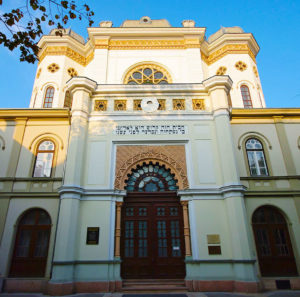 After the defeat and dissolution of the Austro-Hungarian Empire in World War I, Hungarian Jewry—including many members of the Orthodox and Chassidic communities—suddenly found themselves living within the borders of Czechoslovakia, Romania, or Yugoslavia. In 1919, when the short-lived Hungarian Soviet Republic collapsed, a period of “White Terror” ensued, during which some 3,000 Jews were murdered. In the 1920s, the situation became more stable, but by the late 1930s, the first of a series of anti-Semitic laws was enacted, restricting socioeconomic activities of Jews in Hungary. Between 1938 and 1941, Hungary’s Jewish population grew to an estimated 825,000
After the defeat and dissolution of the Austro-Hungarian Empire in World War I, Hungarian Jewry—including many members of the Orthodox and Chassidic communities—suddenly found themselves living within the borders of Czechoslovakia, Romania, or Yugoslavia. In 1919, when the short-lived Hungarian Soviet Republic collapsed, a period of “White Terror” ensued, during which some 3,000 Jews were murdered. In the 1920s, the situation became more stable, but by the late 1930s, the first of a series of anti-Semitic laws was enacted, restricting socioeconomic activities of Jews in Hungary. Between 1938 and 1941, Hungary’s Jewish population grew to an estimated 825,000
After Adolf Hitler rose to power in 1933, the Hungarian government felt that an alliance would be good for them. Both governments had similar authoritarian ideologies, and the Nazis could assist Hungary in retrieving land it had lost in World War I. Over the next five years, Hungary moved closer to Germany. The Munich Conference of September 1938 allowed Germany to annex the Sudeten region of Czechoslovakia. In November, Germany carved a piece of Czechoslovakia — territory that had formerly belonged to Hungary — and handed it back to Hungary in order to cement the relations between the two nations. Starting in 1938, Hungary under Miklós Horthy passed a series of anti-Jewish measures in emulation of Germany’s Nürnberg Laws. In August 1940, Germany gave Hungary possession of northern Transylvania. In October 1940, Hungary joined Germany, Italy, and Japan in the Axis alliance.
 Because of indifference and collaboration, most of Hungary’s Jewry in the countryside were murdered, amongst them a painfully large number of children. Hungarians working with Germans, transported 437,402 people in 147 trains on 56 days beginning on Tuesday, May 15, 1944, right before Shavuos. The trains were composed of cattle cars, with 80—90 people crowded into each car. A train consisted of 35 cars. Three to four trains arrived daily at Auschwitz, where as many as 12,000 people were killed every day. The Holocaust in Hungary was the final act of mass murder of a Jewish community by Nazi Germany during the 1941–1945 genocide of the European Jews.
Because of indifference and collaboration, most of Hungary’s Jewry in the countryside were murdered, amongst them a painfully large number of children. Hungarians working with Germans, transported 437,402 people in 147 trains on 56 days beginning on Tuesday, May 15, 1944, right before Shavuos. The trains were composed of cattle cars, with 80—90 people crowded into each car. A train consisted of 35 cars. Three to four trains arrived daily at Auschwitz, where as many as 12,000 people were killed every day. The Holocaust in Hungary was the final act of mass murder of a Jewish community by Nazi Germany during the 1941–1945 genocide of the European Jews.
When the deportations began, Jews attempted to flee. Some sought shelter with gentiles along the way. Swedish diplomat Raoul Wallenberg saved tens of thousands of Jews in Hungary between July and December 1944. At one point, he appeared personally at the railway station in Budapest, insisting that Jews on the train be removed and presenting the Arrow Cross guards with Protective Passports for many of them.
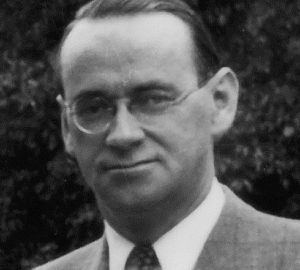 Carl Lutz was a Swiss diplomat serving as the Swiss Vice-Consul in Budapest from 1942 until the end of World War II. He is credited with saving over 62,000 Jews, the largest rescue operation of Jews of the Second World War. Due to his actions, half of the Jewish population of Budapest survived and was not deported. Lutz used paper, not weapons, to fight the Nazis. Lutz began to work with the Jewish Agency for Palestine, a group that helped European Jews get entry to British Palestine. Thousands of of Jews, including 10,000 children, left Hungary with Swiss documents issued by Lutz.
Carl Lutz was a Swiss diplomat serving as the Swiss Vice-Consul in Budapest from 1942 until the end of World War II. He is credited with saving over 62,000 Jews, the largest rescue operation of Jews of the Second World War. Due to his actions, half of the Jewish population of Budapest survived and was not deported. Lutz used paper, not weapons, to fight the Nazis. Lutz began to work with the Jewish Agency for Palestine, a group that helped European Jews get entry to British Palestine. Thousands of of Jews, including 10,000 children, left Hungary with Swiss documents issued by Lutz.
When the Arrow Cross Party, a political party that consisted of Hungarian Nazis was in power, against all odds, he got permission to issue protective documents for 8,000 Jews to flee to Palestine under Swiss protection. He’d only been given permission to issue 8,000 letters, but interpreted that mandate as applying to families, not individual people. He issued more and more protective letters, all numbered one to 8000, and members of the Zionist youth underground forged thousands more. People with Lutz-issued documents crowded into safe houses he helped organize. To prevent them from being raided, Lutz extended Swiss protection to 76 buildings. One of them, a department store called the Glass House, served as a refuge for up to 3,000 Jews and a headquarters for the Zionist underground. Around 62,000 Jews, half of the Jewish population of Budapest, were saved.
Other who saved Jews include: Tibor Baranski, Sára Salkaházi, Sára Karig, Ilona Kolonits, Margit Slachta, and Béla Király.

Tibor Baranski was a Hungarian-American man credited with saving more than 3,000 Hungarian Jewish women, men and children from the Nazis during the Holocaust. He worked with Papal Nuncio Monsignor Angelo Rotta who provided letters of protection, baptismal, and immigration certificates. Baránszki used these to save thousands of Jews in imminent danger of being sent to their death. Baránszki paid for the upkeep of thousands of Jews living in the Vatican’s protected houses. He boldly intercepted groups of Jews who were being deported to the death camps and using fake Vatican letters of protection, persuaded their guards to allow him to bring some prisoners back to Budapest. He was able to protect between 8,000 and 12,000 Jews.
Sára Salkaházi opened the Working Girls’ Homes to provide safe haven for Jews persecuted by the Hungarian Nazi Party. In 1943 she smuggled a Jewish refugee from Slovakia, disguised in the habit of the “grey sisters. During the final months of World War II, she helped shelter hundreds of Jews in a building belonging to the Sisters of Social Service in Hungary’s capital, Budapest. About 100 were aided by Salkahazi herself, who was the national director of Hungarian Catholic Working Women’s Movement. Betrayed, Salkaházi was amongst the prisoners were lined up on the bank of the Danube River on 27 December 1944 and shot. Her body was never recovered. The Sisters of Social Service saved more than 1,000 lives during the war.
Sára Karig managed to send many hundreds of Jewish orphans to Hungarian orphanages. She was instrumental in supplying arms and ammunition to pockets of paramilitary resistance groups in the country. After the Germans occupied Hungary in March 1944, she set up a home-made printing shop for anti-war propaganda. She learned how to produce fake documents for persecuted Jews. She married eight times during the war to provide ’good’ papers for her friends.
As a young girl Ilona Kolonits rescued over 40 children from the Budapest Ghetto. Alongside her mother, Paolina Kolonits her two sisters, Margit and Paola,the Kolonits family sheltered a great number of Jews. Ilona’s elder sister, Margit Kolonits rescued children of Jewish prisoners while they were being deported. Among others the Kolonits family rescued and adopted an orphan of the Holocaust. Apart from rescuing people Ilona Kolonits also took part in carrying messages during the Nazi occupation between groups taking part in resistance in Budapest.
Margit Slachta sheltered the persecuted. She protested forced labour and anti-semitic laws, and encouraged papal intervention against Jewish persecutions. Slachta felt the precepts of faith demanded they she protected the Jews, even if it led to her deaths. Slachta’s sisters arranged baptisms in the hope it would spare people from deportation, sent food and supplies to the Jewish ghettos, and sheltered people in their convents. Slachta was beaten and narrowly avoided execution. The sisters rescued probably more than 2,000 Hungarian Jews.
 In 1943 Béla Király commanded 400 men guarding a Jewish labour battalion in the Don River valley. Király ordered that the Jews be given new warm army uniforms to replace the tattered civilian clothes they had been wearing. He issued them hats bearing the symbol of the Hungarian army, as well as shoes, which many of them lacked. He also made sure that the Jews’ food rations and sleeping quarters were identical to those of regular soldiers. Király made sure that his troops treated the Jews “like human beings, and not like we were human dust,” as they had before Király took charge.
In 1943 Béla Király commanded 400 men guarding a Jewish labour battalion in the Don River valley. Király ordered that the Jews be given new warm army uniforms to replace the tattered civilian clothes they had been wearing. He issued them hats bearing the symbol of the Hungarian army, as well as shoes, which many of them lacked. He also made sure that the Jews’ food rations and sleeping quarters were identical to those of regular soldiers. Király made sure that his troops treated the Jews “like human beings, and not like we were human dust,” as they had before Király took charge.
The Jewish community institutions were renewed after the war. In December 1948, the government officially recognized the Jewish community, guaranteed freedom of religious practice and promised financial support. Many Hungarian Jews immigrated to Israel. Diplomatic relations with Israel were established in 1948. In 1949, the communists gained power and Hungary became the people’s republic. The communist rule led to the closure of many Jewish institutions and the arrest of Jewish activists. During the 1956 uprising against Communist rule, 20,000 Jews opted to leave the country. However, the situation of Hungarian Jewry began to improve in the late 1950s. The community was allowed to reestablish links with the Jewish world, and with the collapse of Communism, all restrictions on ties with Israel were also lifted.
Contact with world Jewish organizations resumed in the 1960’s. In 1967, the Hungarian Jewish population numbered 80-90,000, including those who did not participate in Jewish communal life. The number of Jews in Hungary continued to decrease and, in the 1970’s, declined to 60,000. The collapse of the communist government in 1989 brought the end of restrictions placed on the Jewish community and with relations with Israel.
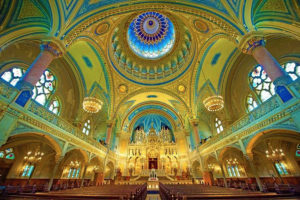 In 2018, the Hungarian Jewish population 47,400-100,000. The great majority of Jews in Hungary are unaffiliated. Some 80 percent of them live in Budapest. Budapest has several Jewish kindergartens as well as Jewish primary and high schools. The non-denominational Lauder Javne Community School, with its 5-acre ultra-modern campus, is sponsored by the Ronald S. Lauder Foundation and was opened in 1990. Today it has some 600 pupils from kindergarten through high school. The Sandor Scheiber School and High School continues the tradition of Budapest’s pre-war Jewish high school. In Budapest, the Balint Haz Community Centre was established in 1995 and is the center of many cultural and educational activities in the Jewish community. There are many active synagogues in Hungary, including the Dohány Street Synagogue, the largest synagogue in Europe.
In 2018, the Hungarian Jewish population 47,400-100,000. The great majority of Jews in Hungary are unaffiliated. Some 80 percent of them live in Budapest. Budapest has several Jewish kindergartens as well as Jewish primary and high schools. The non-denominational Lauder Javne Community School, with its 5-acre ultra-modern campus, is sponsored by the Ronald S. Lauder Foundation and was opened in 1990. Today it has some 600 pupils from kindergarten through high school. The Sandor Scheiber School and High School continues the tradition of Budapest’s pre-war Jewish high school. In Budapest, the Balint Haz Community Centre was established in 1995 and is the center of many cultural and educational activities in the Jewish community. There are many active synagogues in Hungary, including the Dohány Street Synagogue, the largest synagogue in Europe.